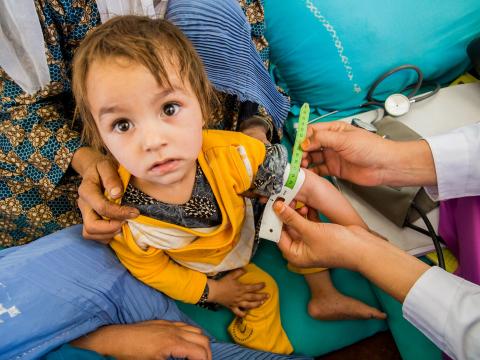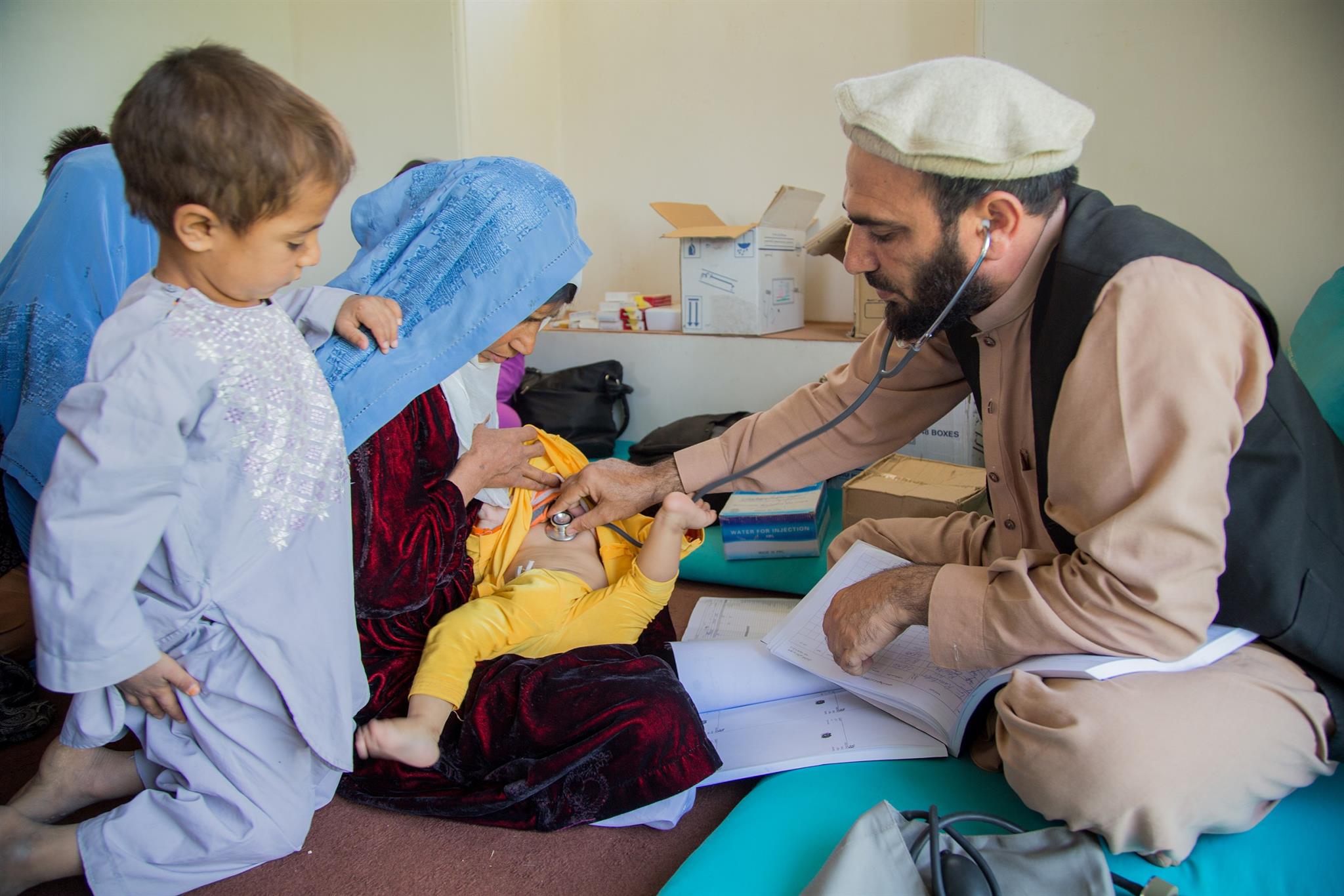When the Clinic Comes to You

A few months ago, in a village in the Langar District of Badghis Province, Afghanistan, Jamila and her children came down with an illness. She and her husband had to travel close to two hours on a donkey to reach the nearest clinic.
But visiting a clinic was never the first option for villagers when they got sick. “We used herbs and home remedies. If it worked then everything was okay,” Jamila explains. “If not, the first thing we checked was our savings to see if we could afford visiting a clinic and buying medicine.”
Most of the villagers in Langar District are wheat farmers without steady incomes, so the cost of purchasing medicine through a pharmacy is often beyond their means.
Jamila’s journey to the clinic started early, around 5 a.m. The average distance of the nearest facility from this community is around one and a half hours walking, which can seem even greater when illness plays a part.
She explains, “We went early in the morning because the weather gets very hot and also so we wouldn’t have to be in a queue for a long time in the clinic.”
There is no doctor to check our children. The staff have to...
The clinic is the nearest health centre in the area and serves around 25 villages. The only health workers are a nurse and a midwife and it is often crowded. “There is no doctor to check our children,” says Jamila. “The staff have to examine patients quickly, so they don’t have time to listen carefully to our health problems.”
Based on a recent World Vision (WV) assessment from Langar District, most of the children in the communities come down with illnesses such as pneumonia and diarrhea, and the fatality rate is rising due to lack of accessible medical facilities. Poor nutrition affects mostly women and children under the age of five. A shortage of midwives and delivery health posts also negatively impacts mortality rates in women and children. Limited awareness around specific epidemics, vaccinations and family planning remains a challenge.
Today, however, Jamila and her children are waiting to be seen by a Mobile Health Team (MHT), in their own village. They no longer have to worry about long distances traveling and the cost of medicine.
 A doctor in World Vision Mobile Health Team is examining a baby.
A doctor in World Vision Mobile Health Team is examining a baby.
With the support of World Vision Hong Kong and Korea, World Vision Afghanistan (WVA) works through an established multi-sectoral Area Integrated Programme in Badghis to provide health care and education to approximately 2,000 families in Langar District. The programme works in three areas: Health, Nutrition and WASH; Education; and livelihoods activities.
The mobile clinic makes two visits per month to14 villages in Langar district from 8 a.m. to 4 p.m. with health workers administering checkups. Blood pressure is taken, hearts and chests are checked and medicine is given to patients free of charge. Additionally, women and children can attend lessons on basic hygiene and health awareness.
Each mobile team has a midwife and a doctor who examine mothers and children. Their resources include 61 types of essential medicines and a variety of medical supplies and items including surgical gloves, gauze, bandages, health education registry books, antenatal care, postpartum and family planning care cards, patient referral books, birth certificates and a Growth Monitoring registry to chart the development of children and infants.
“We examine approximately 50-60 patients in a day,” says Dr. Bazgul, a member of the World Vision Mobile Health Team. “In summer, children mostly suffer from diarrhea and vomiting, and in winter we get a lot of cold-related illnesses such as pneumonia and other respiratory infections
Dr. Bazgul adds that mothers and young girls are often affected by stomach and kidney pain. “Sickness in women and children is mostly related to limited knowledge about personal and environmental hygiene and also a lack of clean water in the village.”
“From my home to here is a 20 minute walk. As soon as I learned that the team had come to the village I ...
“Today I came here because my youngest child has diarrhea,” says Jamila. “From my home to here is a 20 minute walk. As soon as I learned that the team had come to the village I brought my children here to be checked!”
Jamila visited the MHT for the first time two months ago. “I had come here because I had a headache,” she explains. “The midwife told me that I have anemia. She gave me some colourful tablets and advised me on what foods I should eat. Since that time I have felt better and don’t get tired as easily. My headaches are also less frequent.”
Most of the patients who have benefited from the MHT mention the quality of the medicine they receive. “The…medicine is very good,” says Sakina, 38, who has come to the mobile clinic to be checked by the midwife. “We had bought medicine from pharmacies in the city, but we rarely got better using them.”
According to Dr. Bazgul, there are many illicit, black market medicines everywhere in Afghanistan, including Badghis Province. These medicines often make illnesses worse instead of curing them. “We have a contract with one of the best pharmacies in Herat Province,” he says, “where they provide a guarantee for high quality medicine. Our patients are happy,” and the results in these communities are plain to see.
Jamila is grateful for the changes that WVA has helped bring about in the area. “God bless you. We are learning about personal and environmental hygiene and our children can be examined [and receive medical care here in the village]. You have addressed one of [the major] problems in our daily lives. Thank you.”